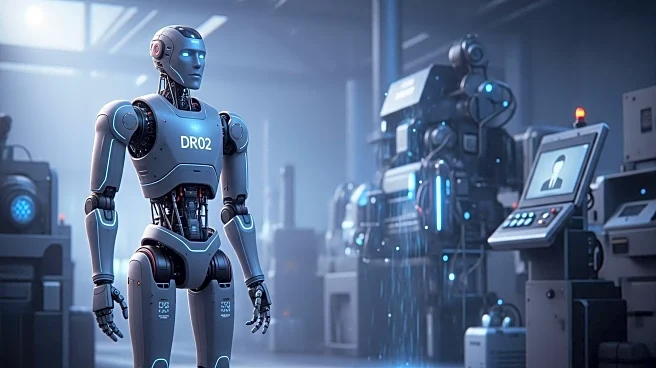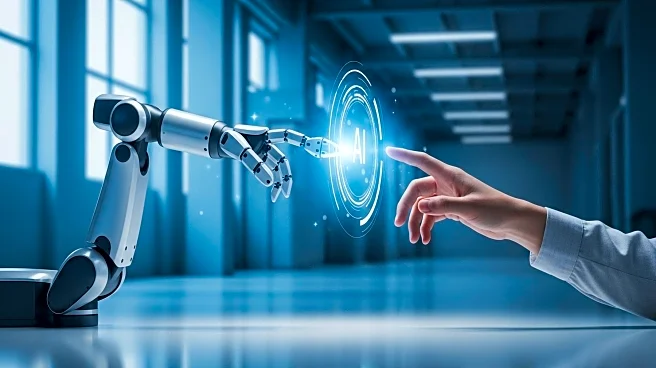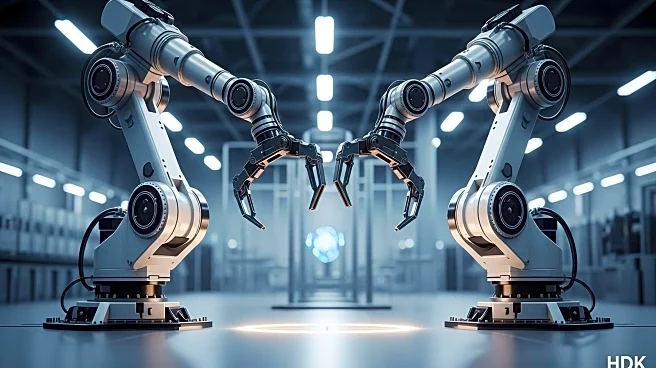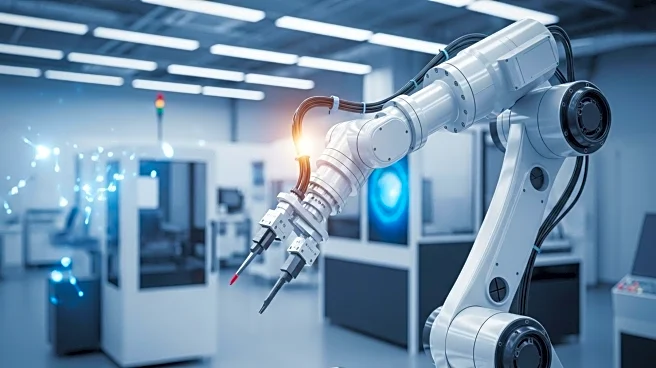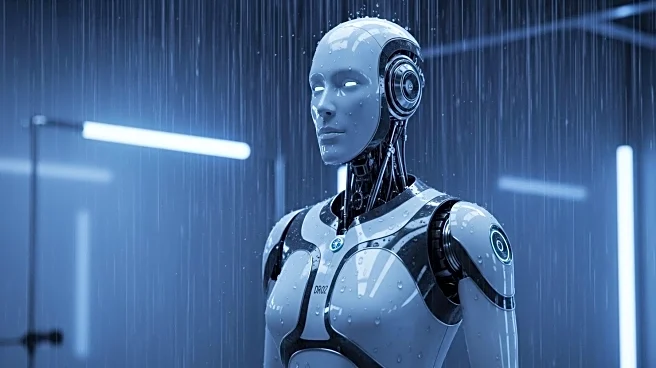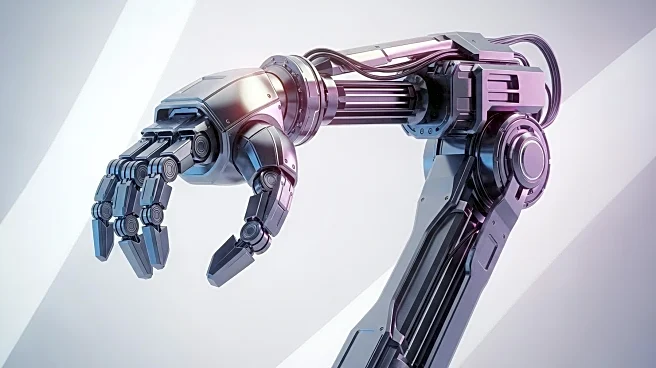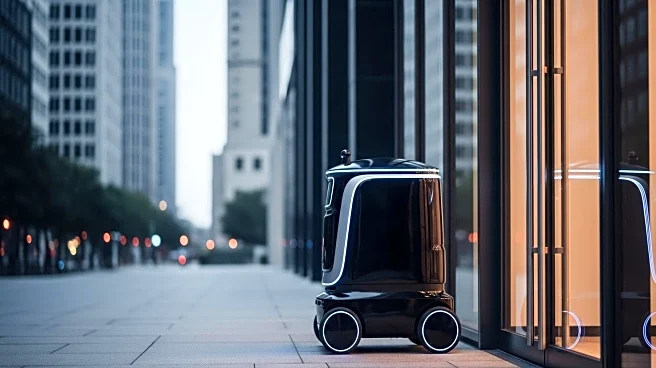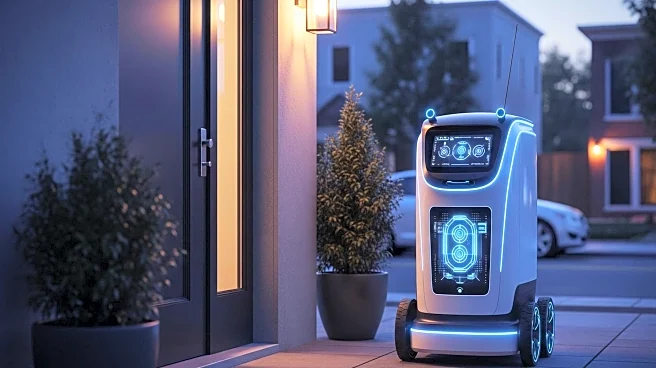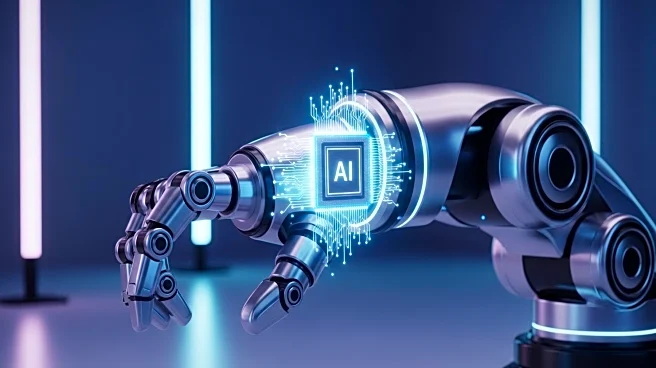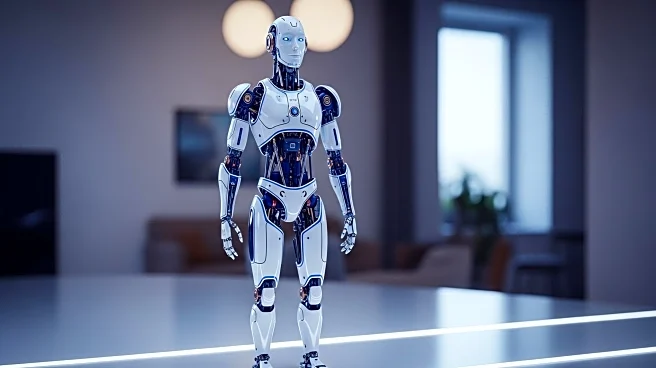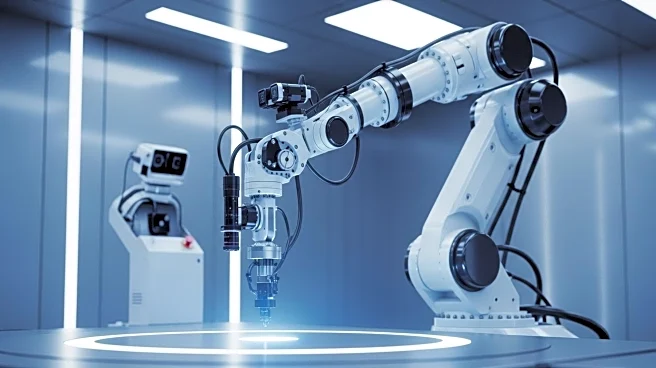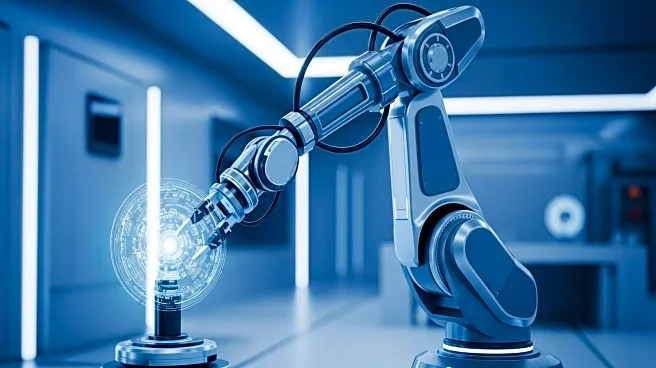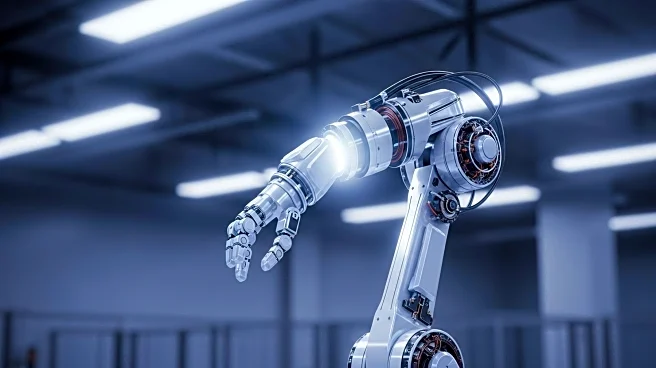What is the story about?
What's Happening?
Deep Robotics has introduced the DR02, a second-generation humanoid robot designed for industrial applications in all-weather conditions. Launched on October 9, the DR02 is equipped with an IP66 protection rating, making it resistant to dust and water. It can operate in temperatures ranging from -20°C to 55°C, allowing it to function in environments such as rain, humidity, cold storage, and high-temperature workshops. The robot stands 175 cm tall, similar to an adult male, and can walk at speeds of 1.5 m/s under normal conditions, or up to 4 m/s for emergency tasks. It is capable of climbing stairs, navigating slopes, and carrying loads, with each arm able to handle up to 10 kg. The DR02 features a modular quick-detach design for easy maintenance and reduced downtime, and is equipped with advanced computing and sensor systems for real-time data processing and environmental perception.
Why It's Important?
The launch of the DR02 represents a significant advancement in the robotics industry, addressing the challenge of deploying humanoid robots in outdoor and harsh conditions. This development could have substantial implications for industries such as security, manufacturing, logistics, and infrastructure maintenance, where reliable robotic operations in variable climates are crucial. By enabling robots to perform tasks traditionally hindered by environmental factors, Deep Robotics is expanding the potential applications of humanoid robots, potentially increasing efficiency and reducing labor costs in these sectors. The DR02's capabilities could lead to enhanced operational safety and productivity, offering businesses a robust solution for challenging environments.
What's Next?
Deep Robotics is likely to focus on further testing and deployment of the DR02 in various industrial settings to demonstrate its capabilities and reliability. As industries explore the integration of humanoid robots into their operations, there may be increased interest in customizing the DR02 for specific tasks or environments. Stakeholders in sectors such as security and logistics may evaluate the robot's performance in real-world scenarios, potentially leading to broader adoption. Additionally, advancements in sensor technology and computing power could further enhance the DR02's functionality, paving the way for future iterations with even greater capabilities.
Beyond the Headlines
The introduction of the DR02 may prompt discussions on the ethical and social implications of humanoid robots in the workforce. As robots become more capable of performing tasks traditionally done by humans, there could be concerns about job displacement and the need for new skill sets among workers. Furthermore, the deployment of robots in security and surveillance roles may raise privacy and ethical considerations, necessitating clear guidelines and regulations to ensure responsible use. The DR02's ability to operate in diverse environments also highlights the potential for robots to assist in disaster response and recovery efforts, offering new avenues for humanitarian applications.
AI Generated Content
Do you find this article useful?
